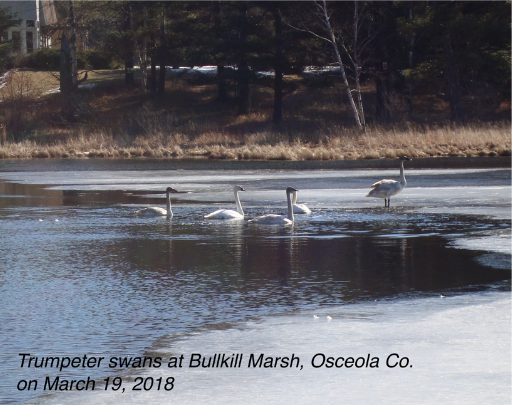The Detroit Free Press ran an article on March 16th about the proposed potash mine in Osceola
county. The article was called “Gold mine of potash sits beneath Michigan, could be worth $65
billion”. We beg to differ with this headline and article and would much rather say that it is
“Fool’s Gold”.
The quality of the potash in Michigan is not the problem, but the location of the potash very
much a big problem. Almost all known potash deposits are at depths below 8000 feet.
The method for mining this above average potash is solution mining. Heated ‘fluid, mostly
water’ melts the potash more than a mile and half underground and the melted ‘potash
solution’ is pumped to the surface and “dried” leaving the above average potash.
The cost for this potash is another big problem. Solution mining at depths of 8,000 feet costs at
least $500 a ton to produce the potash in Michigan. The market for potash last year was under
$200 a ton. A few weeks ago the price was at $240 a ton. If it costs $500 a ton to mine and it
sells for $250 how many ton’s will it take to break even? Answer is ZERO.
The market situation for Michigan potash is iffy at best. Within a few miles of the US Canada
border, there reportedly is more than a thousand-year supply year supply of potash that has
already been mined and is sitting waiting for shipment. This potash was near the surface in
Canada and it was solution mined (around 1,000 feet down) or strip mined at tiny fractions of
costs compared with Michigan solution mining down more than a mile and a half below the
earth’s surface.
Another serious problem is the growing trend to organic farming. Organic crop production is
the largest growing segment of the agricultural pie. That means there is at least some
uncertainty as to whether there will be a growing demand for potash into the future.
There also is the record of past potash mining in this location. Three Fortune 500 companies
have attempted to “mine” potash and failed in a location less than a mile and a half from the
location for the potash mine under permitting consideration. Did they did fail because they
were stupid or inept? Solution mining at a mile and a half below the surface just cannot
compete with easier locations. Unless potash becomes an item for a trade war with Canada,
there will be little likelihood that Michigan solution mining at 8,000 feet and lower will be able
to compete in the marketplace. The Michigan industrial farming community has supported this
mining effort. Such support at this time doesn’t cost a thing. One can only guess whether that
support will remain when Michigan potash costs twice as much or more as other potash.

There is no difference between the potash that was mined off and on for a decade or two at
the present salt mining location and the area under consideration for potash mining by the
DEQ. In fact, the applicant for these permits is using the records from the defunct potash
mining effort to seek DEQ approval, having drilled no actual wells of their own to date.
One could guess that if there were to suddenly develop a vibrant market for Michigan solution
mined potash, the company currently solution mining salt might well be a major competitor to
the company seeking the DEQ permits for new solution mining operations.
When the marketplace challenges are added up, Michigan potash looks more like “fool’s
gold” than the real thing.
Michigan Citizens for Water Conservation objects to the proposed location of the permits under
consideration by the DEQ. It is in the middle of four pristine wetland systems. Trumpeter
swans have already returned this year to an area practically on top the proposed mining
operations (photo below of trumpeter swans on March 19 at Bullkill Marsh).
According to records held by the Register of Deeds in Osceola and Mecosta counties, there are
more than 10,000 acres in five different townships under lease to the applicant. There are
dozens of possible alternate mining locations where wetlands are not as threatened and
perhaps major new roads would not have to be built.
The other issue of great concern to MCWC deals with the ability of the aquifers to sustain
1,200 gallons a minute continuous withdrawal for more than a year to create these solution
mining wells. After the wells are complete, the applicant states their mining operations will
take 800 to 900 gallons a minute continuously 24/7.
MCWC does not believe the aquifer(s) can sustain such withdrawals without significant and
possibly irreversible damage.
Much more needs to be done by the DEQ to guarantee the permitting of this mine does not
permanently damage the environment.
We do recognize the governor and the state government has ponied up serious money to
create a new road to support a new potash mining operation. The $2 million dollar question is –
if it is built will it be a ‘road to nowhere’?
Jeff Ostahowski, VP of Michigan Citizens for Water Conservation and the MCWC Board:
Peggy Case Karen Turnbull
Chris Swier Wendy Nystrom
John McLane Jim Maturen
Pam Gilbert Diane Weckerle
Shannon Abbott Ken Ford
Read more about this situation and Potash mining here.
Also published on Medium.

